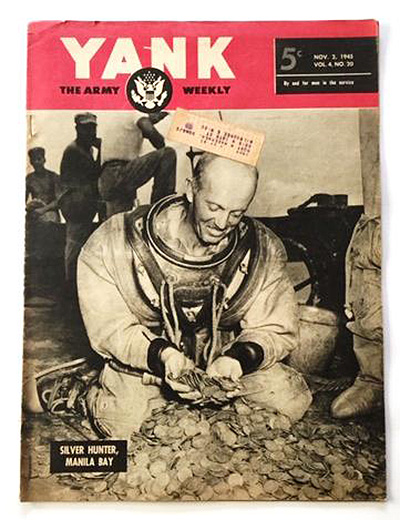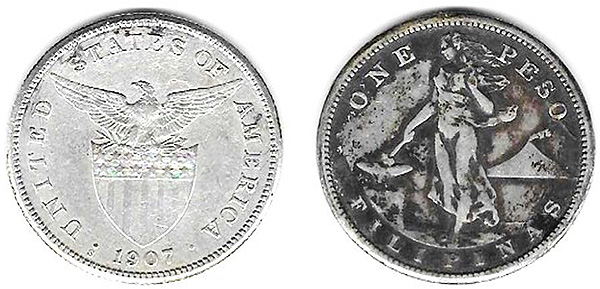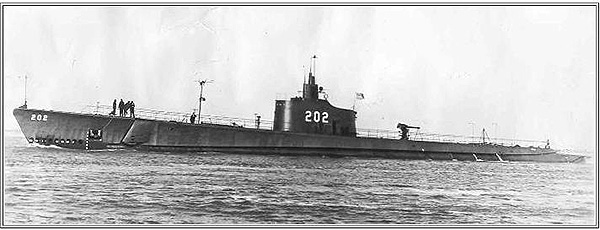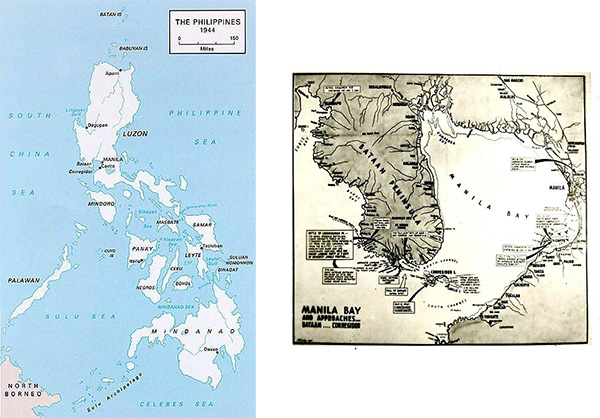
NOW Articles Written By Members
Bullion And Coin Tax Exemption – Act Now!
Is There A Twenty Cent Piece We Can Add To A Collection
Capped Bust Half Dollars: A Numismatic Legacy
U.S. Innovation Dollars: Our Most Under-Collected Coin?
My 2023 ANA Summer Seminar Adventure
In defense of the American Women's Quarters
A look back in numismatic history – the Hicksville Silver Dollar Hoard
The proofs so few of us collect: Jefferson Nickels
A look back in numismatic history – a story too good to be true
Kilroy promotes war bond sales
Just passing through a short-lived bank
The Kewaunee Line Encased Coin Folder
Lyman C. Draper: Collector, Historian, Genealogist
The WWII Philippine Silver Dump
A Sextet Of Scientists From Wisconsin
Wisconsin Territorials: Come Josephine, In My Wayback Machine
New Milwaukee Buck: A Kha$h Middleton Note
Not Your Typical Olympic Sports
Rahr Brewing Of Wisconsin... and beyond
>> More articles in the Archive
For more NOW Articles Written By Members,
The WWII Philippine Silver Dump
by Tom Casper #982

YANK magazine.
November 2, 1945.
I recently picked up a copy of the YANK - The Army Weekly magazine. It was dated Nov. 2, 1945, which is exactly two months after Japan surrendered to the U.S., putting an end to World War Two. I was intrigued by a numismatic picture on the front cover of the issue. It depicted a diver holding handfuls of coins with the caption, "Silver Hunter, Manila Bay." The article on the inside included additional photos and a brief description of them.
"The job of the Army and Navy divers was to recover 17 million silver pesos from the bottom of Manila Bay. The silver, which was all that remained in the Philippine treasury after its gold and securities had been evacuated by submarine, was dumped into the bay in 1942 when the fall of Corregidor seemed imminent. As of this date they have brought up over a million of the coins. The divers worked at a depth of 110 feet on the muddy bottom near the mouth of bay."
Not being a collector of world coins, I never heard this unusual and intriguing story. When I checked numismatic references I found numerous stories, some in great detail mentioning this event. I gather collectors of Philippine coins and currency are well versed in this incident.
The story begins Dec. 7, 1941 when Japan ferociously bombed Pearl Harbor in Hawaii. This was the beginning of Japan’s land-grab and was similar to what Germany was doing in Europe. The following day the Japanese invaded the Philippines, also a U.S. possession at the time. They wanted the Philippines for several reasons; to prevent the use of the Philippines as an advance base of operations by American Forces; to acquire staging areas and supply bases to enhance operations against the Dutch East Indies and to secure lines of communication between occupied areas in the south and the Japanese Islands.

A 1907-S and 1908-S Philippine Peso salvaged from the sea. The black corrosion comes from
exposure to salt water. From my collection. Actual size: 35mm
The battle or fall of the Philippines began on Dec. 8, 1941. It had become the last American foothold against the invading forces of Imperial Japan. The Filipinos knew if the Philippines fell, millions of dollars of national assets in gold, silver, securities, and currency would fall into the hands of the enemy. All the country’s assets were sent to Corregidor Island. It totaled $38 million in U.S. Treasury checks, $31 million in American and Philippine currency, $9 million in silver pesos and over 10,000 pounds of gold worth almost $9 million.
On Jan. 12, 1942 the 307-foot submarine, U.S.S Trout was tapped for her second war patrol to Corregidor Island at the entrance to Manila Bay. U.S. troops and the Filipinos fighting alongside of us badly needed supplies of food and ammunition. Every inch of interior space of the ship was crammed with ammo boxes. It was a months-long journey before they arrived at the Japanese blockaded Philippines. On Feb. 3 the sub arrived and zig-zagged through the U.S. minefields surrounding Corregidor. The cover of darkness allowed the ammunition to be unloaded, all by hand.
After the sub was unloaded, Captain Frank W. Fenno asked for ballast to replace the twenty-five tons of ammunition he delivered. Without sufficient ballast the sub would be difficult to dive and dangerously top-heavy when surfaced. Officials remembered a horde of gold in the treasury reserve vaults where each bar weighed forty pounds.
They also had thirty-five million dollars’ worth of silver bullion, cash, and negotiable securities. All the gold (319 bars) weighing 6.5 tons were taken aboard. The remaining ballast came in the form of 630 bags of coins, each containing 1,000 silver pesos. The sub headed for Pearl Harbor where the cargo was unloaded and safely stored and later transferred to Washington.

U.S.S. Trout
Not all the precious metal could be loaded aboard the submarine, however. Other ships couldn’t get to Corregidor because of the Japanese blockade, other subs had no room for the cache, and aircraft were impossible to use due to the weight of the coins. The only decision left was to dump the remaining silver in Manila Bay to protect it from the enemy and to hopefully recover it later. More than $10 million in silver was dumped at night in Manila Bay just before the final surrender. (These were coins that the Philippine Treasury held as reserve for paper currency.) Corregidor surrendered on May 6, 1942. Some consider this as the worst military defeat in U.S. history.
About 23,000 American military personnel and about 100,000 Filipino soldiers were killed or captured. After the Philippines fell the Japanese learned about the secret dumping of the silver. They ordered Filipinos and later U.S. divers who were prisoners to recover the silver. It was at a depth of 120.’ The U.S. divers risked their lives trying to sabotage the recovery effort. They would cut open the bags of silver, so they were impossible to bring up. They also smuggled some coins they brought up and give them to the Philippine resistance who would use the money to purchase much needed food & medical supplies for American and Philippine U.S.S. Trout 33 prisoners. About 2 million pesos, worth at the time about fifty cents each in American currency, were recovered by the Japanese.
On Oct. 20, 1944 General Douglas MacArthur waded ashore onto the Philippine Island of Leyte and declared “People of the Philippines, I have returned.” It was in January 1945 that MacArthur’s forces invaded the main Philippine Island of Luzon. U.S. troops fought the Battle of Corregidor which stretched from Feb. 16 to March 2, 1945 and ultimately retook the island. On July 5, 1945 MacArthur’s communique stated, “The entire Philippine Islands are now liberated.” After the war American salvage ships of the Seventh Fleet performed the recovery operation and recovered five million pesos, resulting in the story published in the magazine. Of the 27.5 million pesos dumped in Manila Bay, about 7 million were recovered. You can spot these salvaged coins in the marketplace as they will usually have black corrosion on them from effects of saltwater.
While the transferring and recovery of the silver was a success, the U.S.S Trout suffered a tragedy. The sub received eleven battle stars before it was listed as “overdue” in early February 1944. She was lost at sea with all 81 hands on board. After the war Japanese records show the sub was depth-charged and sank. When you hear about stories like this, it is no wonder these troops are referred to as the Greatest Generation.

Have an interesting numismatic topic you’d like to share with your fellow NOW members?
Send your article to evan.pretzer@protonmail.com today!!!